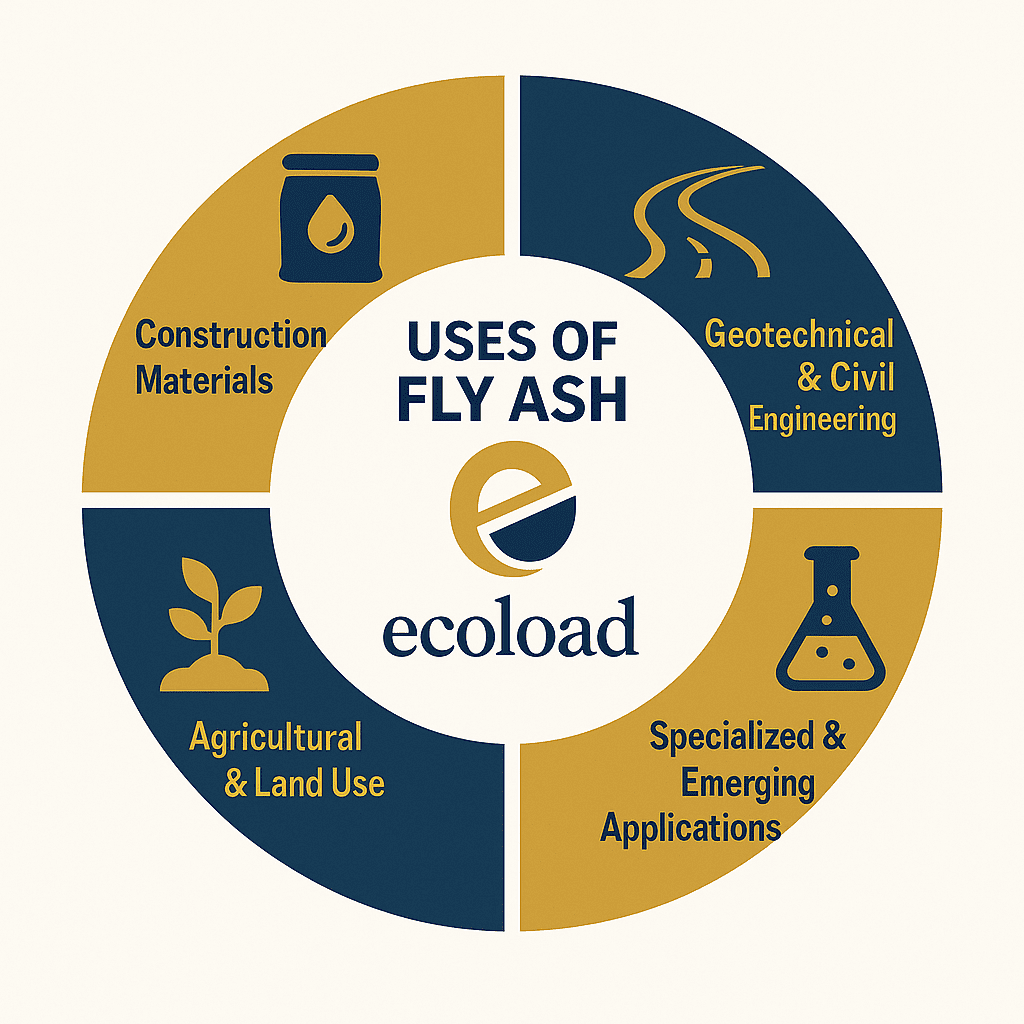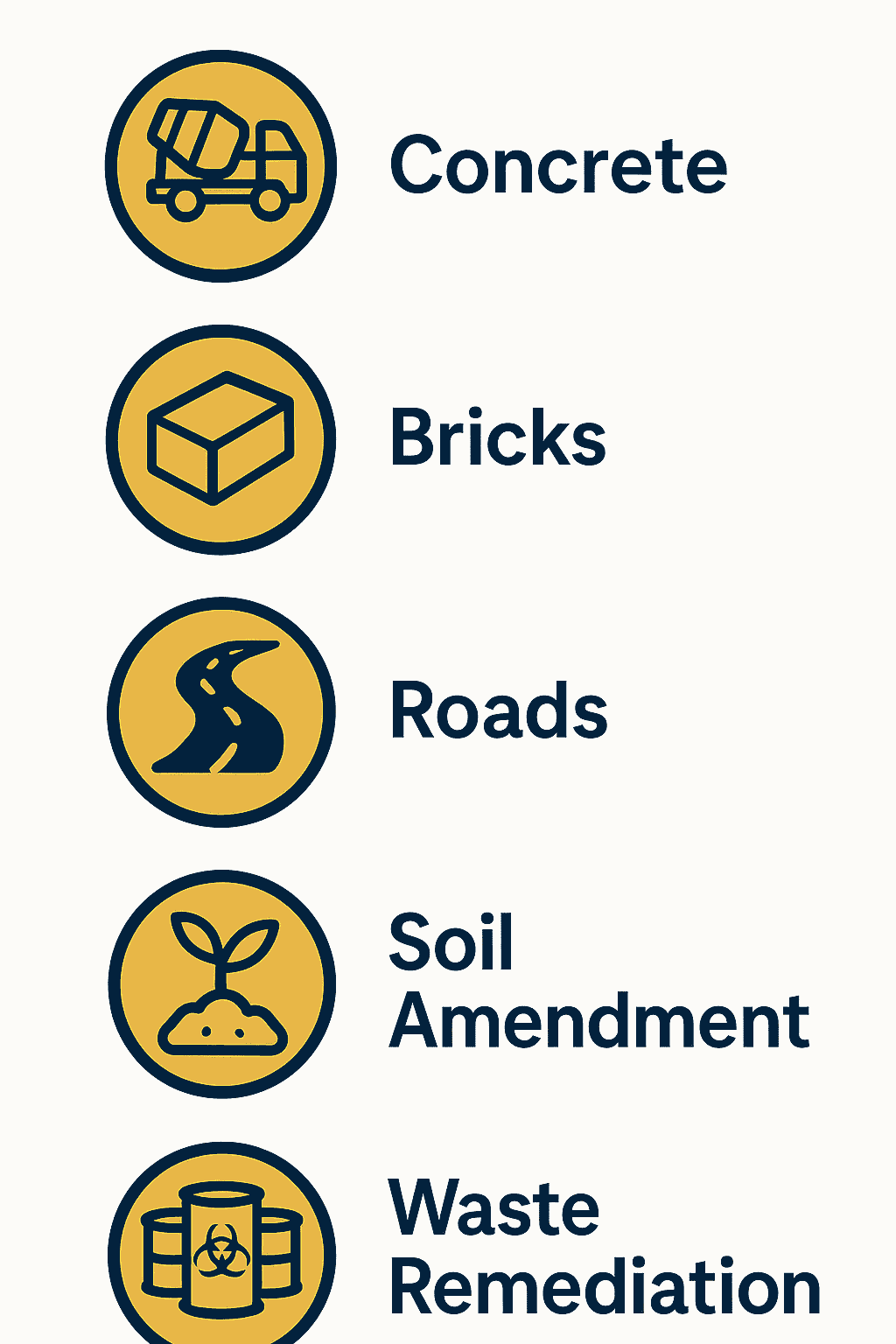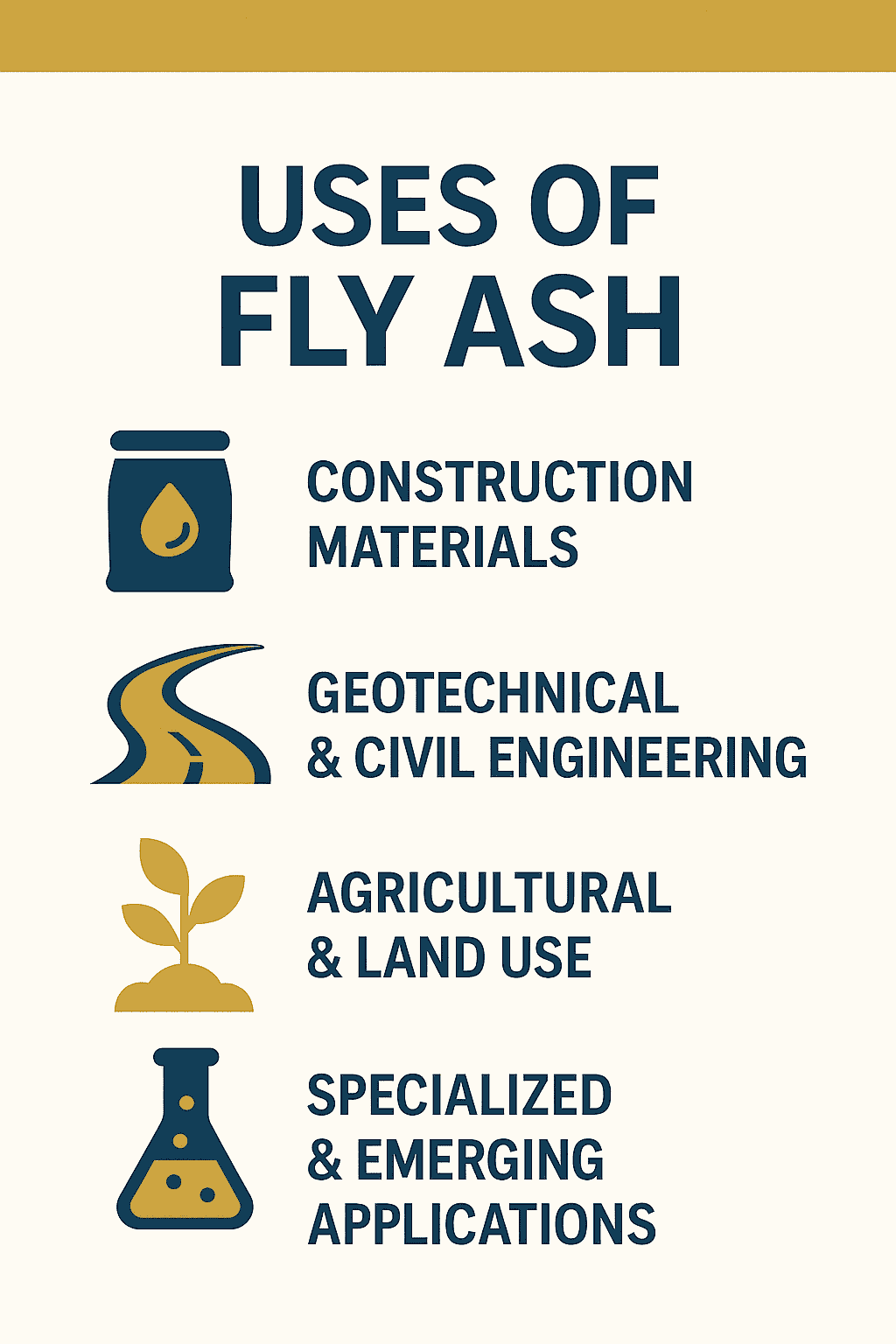




Fly ash is widely recognized as a versatile material with applications across construction, environmental remediation, agriculture, and advanced materials. Its pozzolanic properties, high silica and alumina content, and spherical particle shape make it an invaluable resource for transforming an industrial waste stream into valuable inputs for multiple industries.
| Category | Sub-Category | Key Benefits |
|---|---|---|
| Construction Materials | Cementitious Supplement | Replaces 30-40% cement; forms extra C-S-H for strength |
| Concrete Enhancement | Boosts strength & durability; improves workability | |
| Bricks & Mortars | Lightweight, thermally insulating bricks; crack-resistant mortar | |
| Roadbase & Asphalt | Stabilizes sub-base; enhances rut & moisture resistance | |
| Geotechnical & Civil Engineering | Soil Stabilization & Embankments | Lightweight fills; higher shear strength |
| Mine Backfill & Reclamation | Void support; low-permeability liners | |
| Environmental Applications | Waste Treatment & Stabilization | Immobilizes metals; neutralizes acid mine drainage |
| Carbon Capture Support | Serves as CO2-adsorbent support | |
| Agriculture & Land Use | Soil Amendment | Raises pH; improves moisture retention |
| Nutrient Carrier | Slow-release N-P-K delivery | |
| Emerging Applications | Geopolymer Binders | High-strength, chemical-resistant binders |
| Ceramics & Refractories | Low-energy ceramic firing; alumina-rich refractories | |
| Zeolite Synthesis & Adsorbents | Produces Na-A / Na-X zeolites for purification | |
| Polymer & Paint Fillers | Enhances stiffness in plastics; improves paint opacity | |
| Catalyst Supports | High-surface-area supports for heterogeneous catalysis |